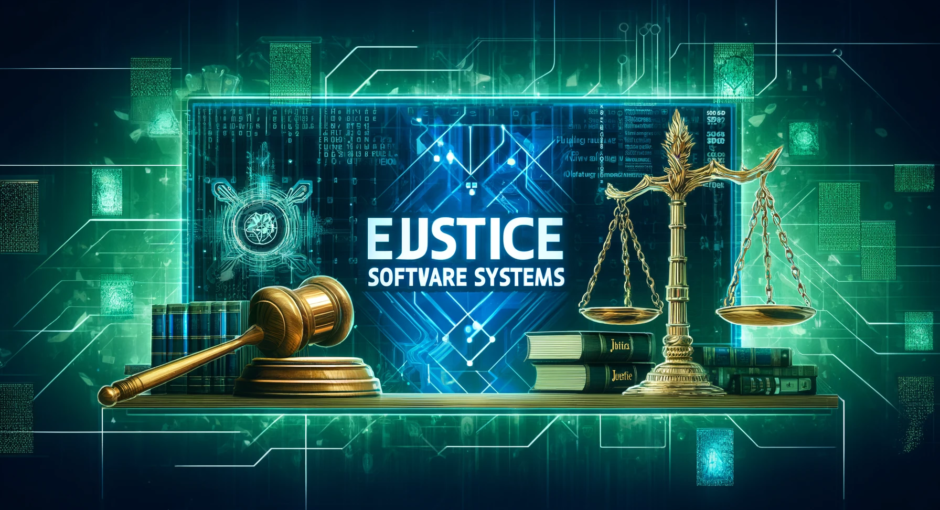Every new wave of automation has put us under stress about jobs disappearing. Advances in artificial intelligence—especially generative AI like large language models (LLMs)—make some of us anxious about “What’s next?” Headlines warn of “AI taking over jobs” as chatbots and algorithms now perform tasks once done by office workers, professionals, and creatives.
Such fears, however, often overestimate the threat. Early dire predictions assumed that automation would replace human effort in all occupations. In reality, jobs have many tasks, and only some may be handled by AI. When researchers re-examined the potential of automation using a task-based approach, they found a far more negligible impact; about 90% of workers are in jobs where humans still perform most tasks, even with current technology. This huge gap between alarming forecasts and nuanced analysis highlights a key point—AI may change how we work, but it’s unlikely to erase work. Let’s learn if artificial intelligence has a negative impact on employment.
What is LLM, and Key Global Drivers Fueling Its Growth
A large language model (LLM) is an artificial intelligence type designed to understand and generate human-like text. These models are trained on vast amounts of written data, such as books, websites, articles, and code, to learn the structure and patterns of language. As a result, they can respond to questions, write essays, summarize content, draft emails, translate languages, generate code, and even hold conversations.
What makes LLMs unique is their ability to handle various language-based tasks with little or no prior instruction. They rely on a machine learning method called deep learning, specifically using what’s known as transformer architecture. This allows them to analyze context, predict words, and generate coherent responses that often sound like real people wrote them.
LLMs are behind some of today’s most well-known AI tools, such as ChatGPT, Claude, Gemini, Deep Seek, and LLaMA, and tech experts integrate them into business platforms, productivity tools, customer service systems, project management tools, and creative workflows.
Key Global Drivers of the LLM Market
Unstructured Data Processing
LLMs change how businesses handle unstructured data, such as emails, customer feedback, chat logs, reports, and social media management content, which has traditionally been difficult to analyze at scale. Unlike structured data in spreadsheets or databases, unstructured data lacks a fixed format, making it harder to extract insights using conventional tools. LLMs overcome this challenge by understanding natural language, recognizing patterns, and generating summaries without manual tagging. This option allows companies to analyze sentiment quickly, detect trends, and automate responses.
Digital Transformation Across Industries
Digital transformation across industries is driven by integrating LLMs to automate routine tasks and accelerate business workflows, helping work smarter and faster.
- in healthcare, they help summarize patient records and assist in diagnostics;
- in finance, they analyze market trends and generate reports;
- In retail, companies use data to power personalized customer interactions and product recommendations.
- manufacturing and logistics leverage LLMs for knowledge management, process optimization, etc.
The idea of embedding LLMs, virtual assistants, chatbots, summarization tools, and intelligent search engines helps process data and elevate business operations, reducing costs.
AI-Powered Customer Experience
The demand for an AI-powered customer experience is one of the business drivers needed to meet growing expectations for speed, personalization, and 24/7 support. Consumers today want instant answers from intelligent chatbots and personalized interactions tailored by recommendation systems, elevating the customer journey. As a result, companies across industries invest in AI-driven tools to cut costs and deepen customer loyalty in order to stay competitive in the digital market.
Global AI Investment & Government Support
Global investment in AI technology, particularly in large language models, has been experiencing growth driven by individual initiatives and government support. In 2024, the global AI software market was valued at approximately $98 billion, with projections estimating it will reach $391.43 billion by 2030, growing at a compound annual growth rate (CAGR) of 30%.
The strategic importance of AI features is indisputable, so governments globally make significant investments to foster innovation, helping businesses and economies grow. The European Union, for instance, has launched the InvestAI initiative, committing €200 billion to enhance AI potential across EU members. This includes €50 billion in public funding and €150 billion from private investors, aimed at developing AI infrastructure such as data centers and supporting AI research and development. Source: Wikipedia
China also provides financial support for science and technology innovation enterprises, aiming to bolster the country’s contribution to emerging technology amid ongoing geopolitical tensions. Reuters
These governments’ efforts ensure that advancements in AI, particularly in LLMs, are aligned with national interests and ethical standards.
Source: Ourworldindata
Cloud-Based AI Infrastructure & API Access
With API access, companies can integrate LLM functionality directly into their apps, websites, or business workflows. The cloud allows scaling AI services, such as real-time chat support, document summarization, automated translation, or covering programming tasks and code generation. This flexible, pay-as-you-go model significantly lowers the barrier to entry for startups and enterprises alike, enabling them to innovate faster and stay competitive, transforming how businesses build and deploy intelligent solutions.
Historical Examples of How Technological Advancement Displaced Jobs
Historical lessons on unemployment due to technological progress show that while new technologies often displace specific jobs, they also create new roles, industries, and opportunities, leading to long-term net employment growth rather than lasting job loss. This pattern has been observed repeatedly throughout history, from the Industrial Revolution to the rise of automation in the 20th century.
During the Industrial Revolution, machines replaced many manual labor jobs in agriculture and textiles, putting employees under the stress of losing their jobs. However, industrialization ultimately led to a massive expansion in manufacturing jobs and urban economies. Similarly, in the 20th century, the introduction of computers, ATMs, and robotics disrupted clerical, banking, and factory jobs. It also introduced entirely new IT, software, finance, and logistics industries.
A key takeaway is that history shows that technological change shifts the nature of work rather than eliminating it. While some job categories shrink, others grow, and new ones emerge. The most significant disruptions from LLM and artificial intelligence are that they tend to affect repetitive or routine tasks. In contrast, jobs requiring creativity, critical thinking, emotional intelligence, or technical adaptability tend to persist and even thrive.
Crucially, society’s ability to benefit from technological change depends on education, upskilling, and supportive policies. Businesses invest in training, worker mobility, and inclusive innovation to ensure smoother staff transitions.

LLMs and Their Effects on the Labor Market
Large language models, including the best AI chatbots like ChatGPT, have been rapidly adopted in the workplace, but their impact on the labor market remains surprisingly modest. Despite widespread usage across occupations and significant employer investment in tools and training, a large-scale study of over 25,000 workers in Denmark found that LLM adoption has had no measurable effect on wages or working hours across 11 highly exposed professions.
Average productivity gains were small (2.8% in time saved), and only 3–7% of those gains translated into higher earnings, primarily in firms that encouraged AI use. While LLMs have introduced new tasks and workloads, particularly in supportive workplaces, the study finds no evidence of job displacement or earnings growth tied directly to AI chatbot usage. These results challenge the narrative of imminent labor disruption and suggest that without deeper organizational change and policy shifts, LLMs will likely enhance, but not radically transform, the labor market in the near term.
| Occupation | Example AI Task #1 | Example AI Task #2 | Non-AI Task Example |
| Accountants | Drafting financial statements and reports (AI Content Drafting) | Analyzing financial data for trends/anomalies (AI Data Insights) | Handling complex accounting tasks, AI can’t do |
| Customer Support | Reviewing AI-suggested responses (AI Quality Review) | Training chatbot with resolved issues (AI Integration) | Speaking directly with customers on complex cases |
| Financial Advisors | Analyzing market trends and client data (AI Data Insights) | Meeting clients to build personalized strategies | |
| HR Managers | Drafting job postings and documents (AI Content Drafting) | Analyzing HR data and surveys (AI Data) | Conducting in-person interviews or employee evaluations |
| IT Teams Support | Generating troubleshooting guides (AI Content Drafting) | Managing security and compliance (AI Ethics & Compliance) | Manual debugging |
| Journalists | Drafting article outlines and summaries (AI Content Drafting) | Brainstorming story ideas and interview questions (AI Ideation) | Interviewing sources and conducting investigations |
| Legal Advisors | Ensuring legal ethics and confidentiality (AI Ethics & Compliance) | Courtroom representation or legal negotiations | |
| Marketing Experts | Generating marketing copy and product descriptions (AI Content Drafting) | Campaign planning and strategic meetings | |
| Office Clerks | Drafting routine emails and documents (AI Content Drafting) | Quality control of AI-generated documents (AI Quality Review) | Filing, scanning, or handling sensitive documents manually |
| Software Developers | Writing prompts and integrating AI into workflows (AI Implementation) | Writing custom algorithms or debugging | |
| Teachers | Detecting AI-generated homework (AI Ethics & Compliance) | Integrating chatbots into lessons (AI Integration) | Teaching soft skills or managing classroom behavior |
LLM Agents as an Example of Not Being a Threat to Human Employees
LLM agents are advanced AI systems built upon LLMs, designed to perform complex tasks by integrating planning, memory, and tool usage features. Unlike traditional LLMs that generate responses based solely on input prompts, LLM agents can autonomously execute multi-step tasks, interact with external tools, and adapt based on prior interactions.
While the capabilities of LLM agents are impressive, they are not poised to replace human workers but rather to augment their productivity. These agents handle repetitive and time-consuming tasks, such as data analysis, report generation, and customer inquiries, freeing employees to focus on more strategic and creative aspects of their roles. For instance, in customer service, LLM agents can manage routine queries, allowing human agents to address more complex issues that require empathy and nuanced understanding.
In logistics, an AI agent connects shippers (companies or individuals who need to transport goods), brokers (AI helps match shippers with available carriers), and carriers (trucking companies or independent drivers). AI assistants use advanced technologies such as machine learning, natural language processing, and optimization algorithms to streamline connecting shippers with carriers. It offers a more efficient solution than traditional methods of communication. It helps to save working time to confirm MC#, give updates on load details, negotiate prices, and inform requirements for transporting the load. A human agent steps in when the AI agent encounters requests it cannot handle or when price negotiations are required.
Integrating LLM agents into business processes often creates new job roles and opportunities. Positions such as AI trainers, prompt engineers, and AI ethics specialists are emerging to support and guide the effective deployment of these agents. This evolution underscores the role of LLM agents as collaborative tools that enhance human capabilities rather than replace them.
The Productivity Gap: Why It’s Important to Learn Your Team
Although we talk a lot about LLMs offering remarkable capabilities, their average productivity gain in workplace settings remains modest. Simply introducing an LLM isn’t enough. The real gains come from how well companies restructure workflows, train staff, and integrate AI into existing systems. Without that, the technology’s potential remains untapped.
Stakeholders and CEOs should remember that reskilling protects workers more effectively than resisting new technology. The World Economic Forum predicted that AI would create more jobs than it displaces, but the nature of those jobs will evolve. Workers investing in digital literacy, critical thinking, and collaborative skills will best thrive in AI-augmented environments. For employers, investing in ongoing learning isn’t just good ethics—it’s good economics.
AI as a Driver for Job Creation
According to a McKinsey & Company report, AI can create 20–50 million new jobs globally by 2030. These new options boost industries, especially healthcare, manufacturing, and finance. As AI adoption grows, new job postings appear on the job portals:
| Data Analysts Data Scientists | With AI generating massive data sets, there is a growing tendency for experts who can analyze and interpret this information and gain insights into internal processes within the company and external processes in the market. Data analysts and scientists use AI tools to extract patterns and insights that drive businesses to make decisions that lead to commercial success and a stable position in a fast-changing environment. |
| AI Trainers | Professionals who train AI systems ensure algorithms are accurate and effective and address real-world problems. |
| AI Teachers | They teach students to develop new AI applications, AI assistants, and chatbots, and automate and improve business workflows. |
| Machine Learning Engineers | ML engineers design, build, and optimize machine learning algorithms and models. They create AI systems that “learn” from data to perform tasks, such as developing self-learning systems for fraud detection, autonomous vehicles, or AI-driven medical diagnostics. |
| AI Prompt Engineers | These professionals design and fine-tune prompts to optimize AI systems like ChatGPT, Midjourney, Gemini, or other generative AI tools and ensure users get accurate and relevant outputs. |
| AI Content Creators and Designers | These professionals work alongside AI tools to create high-quality content, visuals, and interactive experiences.
Collaborating with AI for video editing, virtual reality simulations, AI-assisted writing, or designing AI-powered games. |
| Robotics Specialists | Robotics experts develop and maintain robots for industries like manufacturing, healthcare, and logistics, such as building warehouse robots for inventory management, surgical robots for precision surgeries, or AI-guided drones for delivery or military services. |
| AI Quality Assurance Testers | These specialists test and assess AI systems to ensure their accuracy and reliability. QA Testers review AI-generated outputs, test chatbots’ or virtual assistants’ performance, and ensure AI tools meet businesses’ needs and industrial standards. |
| AI Systems Cybersecurity Analysts | Cybersecurity analysts protect AI tools from hacking, fraud, and cyber threats after AI integrates into businesses’ IT infrastructure.
Cybersecurity Analysts ensure the safety of AI algorithms in banking systems, monitor for malicious manipulation of AI models, and ensure AI compliance with security regulations. |
| AI-Based Healthcare Specialists | These experts apply AI tools in the healthcare industry so that their skills can help:
|
Source: Lasoft software blog
Final Insights
For now, we offer those who see AI as a threat to breathe and reboot. The narrative that artificial intelligence, especially tools like Large Language Models (LLMs), will eliminate jobs is exaggerated. History has shown us time and again that while new technologies disrupt certain roles, they also give rise to entirely new industries, opportunities, and ways of working. LLMs are no exception.
Rather than replacing human labor, LLMs and LLM agents provide collaborative tools that handle repetitive, data-heavy tasks, freeing employees to focus on creativity, strategy, emotional intelligence, and problem-solving skills that machines still cannot replicate.
In short, LLMs’ impact on the labor market is not a threat but a call to evolve. With the right mindset, infrastructure, and learning culture, AI can be one of the greatest tools of empowerment, not displacement, in the modern workforce.

FAQ
How can my company start using LLMs without disrupting existing workflows?
You can start small by integrating LLM-powered tools into areas like customer service, document processing, AI image generation, or data analysis. Through APIs and cloud-based services, LLMs can be introduced gradually without overhauling everything.
LaSoft offers custom AI development and seamless API integrations to fit your existing systems and business goals.
What industries benefit most from LLMs and AI?
LLMs add value in nearly every industry:
- Healthcare (record summaries, diagnostics)
- Finance (market reports, fraud detection)
- Retail (personalized recommendations)
- Logistics (route optimization, real-time communication)
- Legal (contract analysis, case research)
- HR (resume parsing, candidate screening)
LaSoft has experience across sectors, building industry-specific solutions using AI, automation, and custom software.
What is an LLM agent, and why should I care?
LLM agents are AI systems that generate responses, plan and write tasks, use tools, and adapt to context. They help with more complex workflows and enhance productivity. Consider them as digital assistants that manage tasks from beginning to end.
At LaSoft, we can build and train LLM agents to assist your team, reduce friction in operations, and support business scaling with minimal overhead.
I have a non-technical team. Can we still implement AI?
Many successful AI-powered feature implementations begin in non-technical teams using intuitive tools and guided workflows. The key is having the right tech partner to design, integrate, and support adoption.
What services does LaSoft offer to support AI-driven transformation?
At LaSoft, we provide comprehensive custom software development services that emphasize the following areas:
- LLM & AI-Powered Platforms
- Cloud Integration & API Development
- Digital Transformation Strategy
- Dashboards & Data Visualization
- Business Process Automation
- Product Discovery & UX/UI Design
- Staff Augmentation for AI projects.


